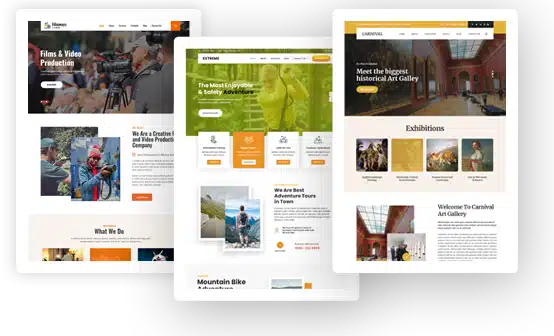Enhancing WordPress with JavaScript Tools for Improved User Interactions

Upgrading your WP website with client-side scripting utilities unlocks a world of opportunities. These can help you amplify responsiveness and even boost visitor interaction. Lively date selectors, appointment organizers, and adaptable modules allow you to turn a plain page into an energetic, interactive space.
This approach not only meets the practical needs of users, but also dramatically improves the overall browsing experience. The site quickly transforms from a simple destination into a dynamic environment where people actively participate and keep coming back for more.
Overview of JavaScript Tools
JS add-ons open up a whole range of features to make a site more lively and easy to use. Extra coding bits let you build functionality that instantly reacts to what visitors do. This includes live checks and even neat interactive displays that work without a page reload. This approach not only makes digital platforms more engaging and fun to navigate, but also allows them to handle complex data easily.
In addition, interactive scripting changes the entire look of a website. Dynamic graphs and responsive pages can be used to showcase real-time stats or guide visitors step by step. This further guarantees a smooth experience and turns visitors into loyal followers.
Importance of Interactive Web Elements
Smart, touch-responsive functions help capture attention and make surfing easier. By using dedicated features, it is also easy to create a site where menus, tabs, and drop-downs work smoothly. This not only offers users immediate access to what they are after, but actively cuts down on frustration. With instant background updates and perfect transitions, visitors perceive the platform as both fast and modern. This makes exploration even more enjoyable.
JavaScript vs. Java
Even though their names sound alike, JS and Java are quite different. JavaScript is mostly used for building interactive web pages that change on the fly in your browser. It lets you adjust what appears on the site instantly based on what a visitor does.
On the other hand, Java is a more heavyweight programming language used for mobile apps or large-scale systems. It is not typically meant for making a site’s front end interactive. Knowing the difference helps in choosing the right tool for the task at hand.
Incorporating JavaScript Calendars
Using date pickers in a WordPress site is a neat way to allow visitors to manage their own schedules. Their flexible design means you can match them to the platform’s style without much hassle. With these tools, users can select certain days or months and see events instantly without leaving the page. This process not only makes the experience more enjoyable, but also helps in organizing information better.
- Use built-in scripts that update instantly as a user interacts with them
- Can highlight important timestamps
- Allows visitors to drag and drop markers and link with databases
Benefits of Using JS Calendars
User Engagement
Incorporating a Javascript calendar enables visitors to interact with the WP site in a lively way. They can tap or click to select dates, which feels much more natural than filling in a form manually. This kind of interactivity keeps them interested and makes the brand feel super responsive.
Event Management Efficiency
For businesses that handle tons of bookings, scheduling features can be a life saver. They allow employees to visually organize and rearrange events with simple clicks or drags. This cuts down on errors and saves time. This approach also makes it easier for both brands and clients to stay on track.
Implementing JavaScript Schedulers
Timetable organizers go a step further than simple calendars by allowing brands to manage specific appointment slots and reservations. These tools are great for clinics, salons, or tutoring centers, where every minute counts. They allow visitors to pick available slots directly on the site, cutting out extra phone calls or emails. On the back end, these also connect to a storage system that keeps track of bookings. This means automatic updates that prevent clashes and show the most current availability.
- Offer a clear visual grid where time slots are organized and can be used for day-to-day scheduling
- Work in multiple views, offering both daily or full week breakdowns
Advantages of Using Schedulers
Automating Booking Processes
Dedicated tools cut down the need for manual input. This also means less time spent on phone calls and more time for other important business tasks. Overall, they make it easier for employees to keep things running smoothly.
Enhancing Real-Time Interaction
Thanks to their quick-response nature, modern organizers update the displayed times as soon as an appointment is made or canceled. This live feedback keeps everyone on the same page and builds trust by showing current availability. Better yet, a Javascript calendar scheduler can be used to support both day picking and detailed time management. This is perfect for setups that need a mix of both features in one smooth system.
Embedding JavaScript Widgets
Components built with JavaScript add extra layers of interactivity to a WordPress site. These modules can be anything from sliding image displays to live content tickers. With these additions, digital platforms can feel more like a living space that adapts as users explore. The best part is that these elements not only boost visual appeal, but also help gather customer feedback.
Enhancing UX with Interactive Widgets
Forms and Feedback Elements
Adding input and response modules that validate user entries instantly can make the whole experience smoother. By making visitors feel like they are part of the site, these widgets can quickly guide individuals to tasks like signing up or checking out.
Dynamic Content Display
These units pull in current information—like weather updates or breaking news—and show it right on the page. This constant flow of fresh media keeps the site current and helps maintain interest.
Key JavaScript Libraries
ReactJS Widgets
Modules built with this popular framework are known for their fast performance and reusable parts. They can manage lots of changes quickly, making them perfect for situations where the widget needs to update often.
Vue.js Dynamic Components
These modules are a simple and lightweight way to offer responsive features. They are great for adding a touch of interactivity without bogging down the site. The best part is that this also ensures a smooth experience for visitors on all devices.
Integrating and Customizing JavaScript Tools in WordPress
- The first move is to include the necessary files in your theme, usually by registering them in your site’s code. Keeping track of which ones need to load before others prevents mix-ups and ensures everything runs properly.
- After the data is loaded, you can change attributes so the features behave exactly how you want them to. This might involve small edits in the code or using a control panel provided by a plugin.
- Changing the look often means adjusting the style sheets. This can be as easy as swapping out color codes or rearranging layouts so everything fits nicely with your site’s overall design.
- It is important that all features look good and work well on all devices. Using responsive design tricks, like media queries, ensures that the extra elements adjust themselves automatically without losing functionality.
Endnote
Bringing modern code add-ons into a WordPress site is a smart way to make it feel more alive and engaging. These enhancements also offer fresh ways to interact with content. They quickly make managing data a lot simpler for both visitors and site managers. Looking forward, these interactive features are only going to become more common and easier to implement.

